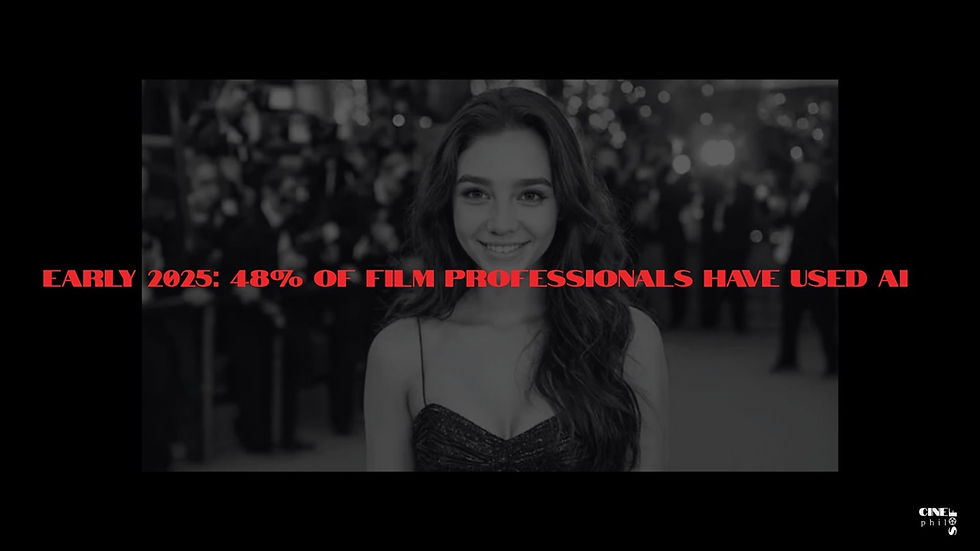Poor Things: Feminism, Freedom, and Steampunk in Lanthimos’s Latest Hit
- Sofia R. Willcox

- Oct 14, 2024
- 3 min read
As Halloween approaches, let's revisit one of the year's most talked-about films, Poor Things (Yorgos Lanthimos, 2023). A box office success and a critical darling, the film has sparked a mix of praise and critique, earning buzz across the awards circuit. Poor Things innovates by blending steampunk-retrofuturist Victorian science fiction with a late-1880s costume drama, paying homage to cinematic pioneers like German Expressionism and the Silent Era. The story reimagines Mary Shelley's classic Frankenstein through postmodern lenses, drawing visual and thematic parallels with Fritz Lang's Metropolis (1927). At the same time, it offers a fresh, contemporary commentary on gender and sexuality, inviting reflections on women’s experiences, both coming-of-age and elder.
The narrative unfolds through Bella Baxter's eyes, starting with shades of blue that reflect Victoria Blessington’s (Emma Stone) mental state, portraying her antenatal depression while foreshadowing her free spirit. This colour palette quickly shifts to black and white, stylistically echoing the gothic mise-en-scène elements that pay homage to German Expressionism, a movement that explored contrasts of light and dark to depict societal anxieties. Yet, the story delves deeper, enhancing the emotional connection with Bella by highlighting her sense of imprisonment and dependence. When she finally acquires her desired freedom, independence, and wanderlust, vibrant colours return, signalling her transformation.
The film employs iris shots—a strong nod to silent cinema and fish-eye lenses—which suggest oddity and a distorted reality, linking closely with the protagonist and subject matter, as women have been othered throughout history. The sky serves as a pathetic fallacy, mirroring Bella’s emotions from melancholy to empowerment.
Bella's costumes reveal much about her journey. In the early scenes, the black-and-white filter suggests her garments are white—the colour of purity and naivety—tying in with her character arc. As the film progresses, her costumes evolve in colour and style, reflecting not only her internal transformation but also her quest for personal expression. The palette becomes increasingly vibrant, symbolising her growing confidence and rebellion against societal norms. One of the most impactful moments occurs when she chooses to wear trousers—an audacious and revolutionary choice for a woman in the 19th century. This act transcends mere fashion; it becomes a defiant rejection of the restrictive conventions that dictate how women should dress, aligning with Bella’s rising intellect with socialist and feminist ideals.
Bella’s journey oscillates between a damsel in distress and a coming-of-age narrative. Resurrected from death by a doctor who performs unconscious brain surgery, she exists as his case study, observed through the male gaze of both him and his intern, Max, as well as the film director, who follows her journey as a woman. Her experiences resonate with female audiences—from sexual awakening and experimentation to self-discovery and wanderlust—forming an empowering journey amidst the brutality, disrespect, and assault. In stark contrast, the male characters are depicted as animalistic and primitive, grappling with jealousy, control, wild sexual and possessiveness, suggesting a critique of toxic masculinity while engaging slightly with Freud’s complex theories.
Throughout Poor Things, metaphors abound. Bella's prohibition from ascending the stairs symbolises her stunted growth. Subtle religious commentaries emerge, such as her first orgasm involving an apple—evoking the forbidden fruit and the repression of female sexuality—while her creator, the emotionally detached surgeon Godwin, is often referred to as God. The slums of Alexandria are positioned as a lower realm, emphasising Bella's privileges.
However, the film is not without its critiques, while portrays London as the innovation epicentre as in God’s origins, it problematises the other representation. It honours Portuguese fado culture but misrepresents the siesta as a Portuguese tradition, perhaps highlighting Duncan's ignorance, as it is Spanish. The portrayal of Australia as a dangerous land also raises eyebrows, as does the depiction of Paris as a beacon of female emancipation and pleasure.
Yet, Poor Things does not shy away from discomfort. Its explicit and grotesque scenes, intertwined with black comedy, create a unique hybridisation of costume drama and science fiction. While it grapples with outdated subjects that resonate in contemporary society, it simultaneously raises questions about their implications for the future, particularly in terms of female experience, gender, and sexuality. It encourages us to confront uncomfortable truths about our past and present, provoking thought about the future we are crafting.




Comments